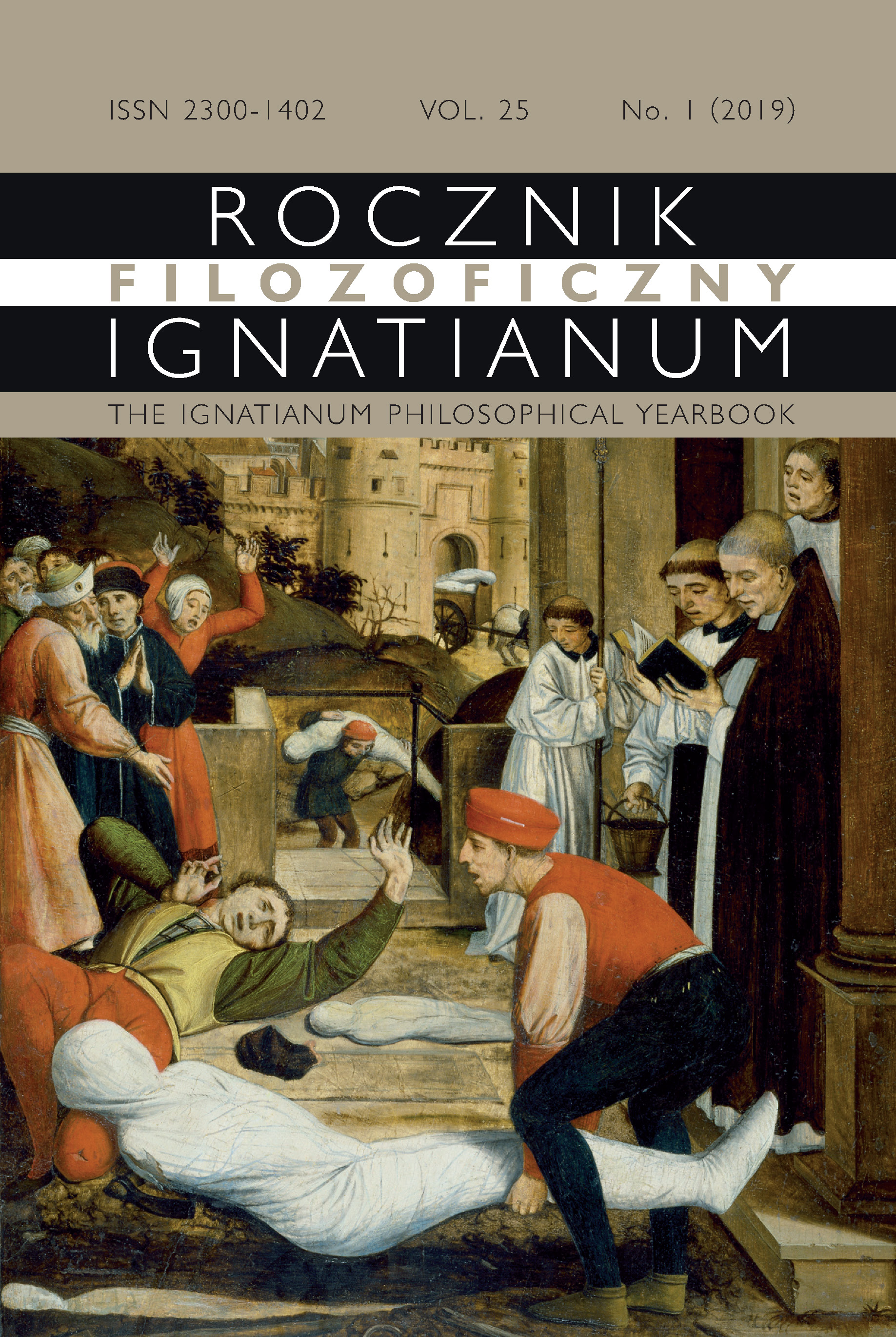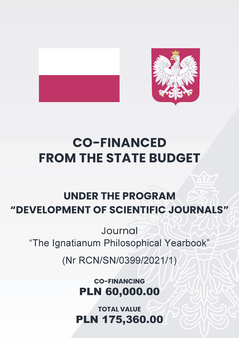Cultural and Social Effects of the Plague Pandemic in Western and Eastern Europe
Selected Aspects
Abstract
The aim of the paper is to present how the late medieval plague pandemic affected the societies of Western and Eastern Europe. The author used chronicles and works of literature of that time, on top of the abundant literature on the subject. Based on this bibliography, he carried out a critical analysis of the content, revealing the similarities and differences in the course of the Black Death epidemic across parts of Europe. The plague was taking its toll on all age groups and at all levels of society. The main reason for this was that physicians, not knowing what was causing the disease, could not help the infected for a long time. The epidemic exposed the poor level of the contemporary medics’ knowledge and their unpreparedness for saving human lives. It also showed that university studies neither equipped them with sufficient knowledge nor gave them the practical skills needed to fight the dangerous disease.
The Black Death particularly disorganized the economic and social life of Western and Southern European countries. Although the plague first struck Central Europe with less intensity than it did the West, it did take its toll on it. Its subsequent waves had an especially dramatic impact on the large trading towns such as Wroclaw and Krakow. A pervasive fear of the plague also contributed to the resentment towards those seen as aliens, especially Jews. They were the ones accused of poisoning wells and supplies, and spreading the disease. In Wroclaw, the capital city of Silesia, which was then part of the Kingdom of Bohemia, the attack on Jews was initiated by John of Capistrano – the papal inquisitor. It led to a much publicized trial that resulted in the death sentences death sentences given to several dozen people. Seeking to understand the reason behind Capistrano’s actions, the author analyzed his treatise on the duties of physicians and clergy toward plague patients. It results from that work that the course of the epidemic in Central Europe, despite its local variations, was not significantly different from that observed in Western countries.
References
Biblia Tysiąclecia, red. ks. Kazimierz Dynarski SAC (Poznań–Warszawa: Wydaw- nictwo Pallotinum, 1980).
Alberth John, The Black Death. The Great Mortality of 1348-1350. A Brief History with Documents (New York: Palgrave Macmillan, 2005).
Bocaccio Giovanni, Dekameron, t. 1, tłum. Edward Boye, t. 1 (Gdańsk: Tower Press, 2000).
Cronaca fiorentina di Marchionne di Coppo Stefani, w Rerum Italicarum Srcipto- res, ed. Niccolò Rodolico, t. 30 (Città di Castello: Casa editrice S. Lapi, 1913).
Cronica di Matteo Villani, ed. Ignazio Moutier, t. 1, (Florence: Magheri, 1825).
Jana Długosza Roczniki czyli Kroniki sławnego Królestwa Polskiego. Ks. 9, 1300– 1370, red. Jerzy Wyrozumski et al., (Warszawa: Wydawnictwo Naukowe PWN, 2009).
Johannes a Capistrano, Speculum concientiae, w Tractatus universi iuris (Venetia: Franciscus Zilettus, 1584), 323–371.
Kronika Janka z Czarnkowa, w Monumenta Poloniae Historica, t. 2, red. August Bielowski (Warszawa: Państwowe Wydawnictwo Naukowe, 1961).
Kronika oliwska, w Monumenta Poloniae Historica, wyd. Wojciech Kętrzyński, t. 6 (Kraków: Akademia Umiejętności, 1893).
Wadding Lucas, Annales Minorum Seu Trium Ordinum A.S. Francisco Institu- torum, t. 12 (Roma: Typis Rochi Bernabò, 1735).
Alberth John, From the Brink of the Apocalypse. Confronting Famine, War, Plague, and Death in the Later Middle Ages (New York: Routledge, 2010).
Bałaban Majer, Historia Żydów w Krakowie i na Kazimierzu 1304–1868, t. 1 (Kra- ków: „Nadzieja” Towarzystwo ku wspieraniu chorej młodzieży żydowskiej szkół średnich i wyższych w Krakowie, 1931).
Ben-Aryeh Nirit Debby, „Jews and Judaism in the rhetoric of popular preachers. The Florentine sermons of Giovanni Dominici (1356–1419) and Bernardino da Siena (1380–1444)”, Jewish History 14 (2000): 175–200.
Benedictow Ole J., The Black Death 1346–1353. The Complete History (Wood- bridge: The Boydel Press, 2004).
Byrne Joseph P., Daily Life during the Black Death (Westport, Connecticut–Lon- don: Greenwood Press, 2006).
Chilińska Agata, Urszula Zawadzka, Arkadiusz Sołtysiak, Pandemia dżumy w latach 1348–1379 na terenach Królestwa Polskiego. Model epidemiologiczny i źródła historyczne, w Epidemie, klęski, wojny. Funeralia Lednickie, t. 10, red. Wojciech Dzieduszycki, Jacek Wrzesiński (Poznań: Wydawnictwo SNAP, 2008).
Herlihy David, Samuel Kline Cohn, The Black Death and the Transformation of the West (Cambridge, Mass.: Harvard University Press, 1997).
Hofer Johannes, Johannes von Capistrano, ein Leben im Kampf um die Reform der Kirche (Innsbuck, Vienna, Münich: Tyrolia-Verlag, 1936).
Klimecka Grażyna, Chory i choroba, w Kultura Polski średniowiecznej XIV–XV w., red.
Bronisław Geremek, (Warszawa: Wydawnictwo Naukowe Semper, 1997).
Pastor Ludwig, Geschichte der Päpste im Zeitalter der Renaissance, t. 1, (Freiburg im Breisgau: Hedersche, 1901).
Ptaśnik Jan, Kultura wieków średnich. Życie religijne i społeczne (Warszawa: Biblioteka Polska, 1923).
The Black Death, ed. Rosemary Horrox, (Manchester: Manchester University Press, 1994).
Joanna Tokarska-Bakir, Legendy o krwi. Antropologia przesądu, (Warszawa: Wydawnictwo W.A.B., 2008).
Bergdolt Klaus, „Petrarca und die Pest”, Sudhoffs Archiv 76/1 (1992): 63–73. Cohn Samuel Kline, „The Black Death. End of a Paradigm”, The American Historical Review 107/ 3 (2002): 703–738.
Cohn Samuel Kline Jr., „The Black Death and the Burning of Jews”, Past & Present 196 (2007): 8–21.
Cohn Samuel Jr., „Plague violence and abandonment from the black death to the early modern period”, Annales de Démographie Historique 134/2 (2017): 39–61.
Cohn Samuel K., Jr., Guido Alfani, „Households and Plague in Early Modern Italy”, Journal of Interdisciplinary History 38/2 (2007): 177–205.
Dobrowolski Paweł T., „Wielki Tydzień w Tuluzie. Wincenty Ferrer i ruch biczowników w późnym średniowieczu”, Przegląd Historyczny 79/1 (1988): 1–19.
Gecser Ottó, „Giovanni of Capestrano on the Plague and the Doctors”, Fran- ciscan Studies 75 (2017): 27–48.
Guzowski Piotr, „Stan i perspektywy badań nad liczbą ludności Polski w późnym średniowieczu i w początkach epoki nowożytnej”, Przeszłość Demograficzna Polski 37/2 (2015): 7–26.
Hoffman Joseph, „Piero della Francesca’s Flagellation. A Reading from Jewish History”, Zeitschrift für Kunstgeschichte 44/4 (1981): 340–357.
Jankowski Augustyn, „Symbolika Trzeciego Jeźdźca Apokalipsy”, Analecta Cra- coviensia 13 (1981): 153–169.
Kalous Antonin, John of Capistrano and Papal Policy, w The Grand Tour of John of Capistrano in Central and Eastern Europe (1451–1456). Transfer of Ideas and Strategies of Communication in the Late Middle Ages, ed. Paweł Kras, James D. Mixson (Warszawa–Lublin: Polska Akademia Nauk–Wydawnictwo KUL, 2018), 33–42.
Lindeman Katherine, „Fighting Words. Vengeance, Jews, and Saint Vicent Ferrer in Late-Medieval Valencia”, Speculum 91/3 (2016): 690–723.
Lissowska Agnieszka, „Antyhusycka misja Jana Kapistrana na Śląsku”, w Ber- nardyni na Śląsku w późnym średniowieczu, red. Jakub Kostowski (Wroc- ław: Oficyna Wydawnicza ATUT – Wrocławskie Wydawnictwo Oświatowe, 2005), 51–63.
Litak Stanisław, „Bractwa religijne w Polsce przedrozbiorowej XIII–XVIII wiek”, Przegląd Historyczny 88/3–4 (1997): 499–523.
Marshall Louise, „Manipulating the Sacred. Image and Plague in Renaissance Italy”, Renaissance Quarterly 47/3 (1994): 485–532.
Mengel David C., „A plague on Bohemia? Mapping the Black Death”, Past & Present 211 (2011), 3–34.
Mixson James D., John of Capistrano’s Preaching Tour North of the Alps, w Reli- gious Life between Jerusalem, the Desert, and the World (1451–1456), ed. Kaspar Elm and James D. Mixson (Leiden: Brill, 2016): 255–276.
Mussap Christian J., „The Plague Doctor of Venice”, Internal Medicine Journal 49 (2019): 671–676.
Nirenberg David, „Mass Conversion and Genealogical Mentalities. Jews and Christians in Fifteenth-Century Spain”, Past & Present 174 (2002): 3–41.
Nowakowski Paweł F., „Cechy husyckich polemik religijnych–zarys zagadnienia”, Studia Środkowoeuropejskie i Bałkanistyczne 24 (2016): 35–44.
Pellegrini Letizia, Ludovic Viallet, „Between christianitas and Europe”, Franci- scan Studies 75 (2017): 5–26.
Roest Bert, „Giovanni of Capestrano’s Anti-Judaism Within a Franciscan Con- text”, Franciscan Studies 75 (2017): 117–143.
Rutkowska-Płachcińska Anna, „Dżuma w Europie Zachodniej w XIV w. Straty demograficzne i skutki psychiczne”, Przegląd Historyczny 69/1 (1978): 75–102.
Rutkowski Piotr, „»Czarna śmierć« w Polsce w połowie XIV wieku”, Studia i Materiały z dziejów nauki polskiej 26 (1975): 1–31.
Sedda Filippo, „»An liceat cum Iudeis participare«. A consilium of Giovanni of Capestrano”, Franciscan Studies 75 (2017): 145–174.
Sigerist Henry E., „Sebastian – Apollo”, Archiv für Geschichte der Medizin 19/4 (1927): 301–317.
Staniszewski Andrzej Tadeusz, „Strzały zatrutego powietrza »na ludzie i na każdą rzecz«. Wczesnonowożytne kształtowanie doświadczenia zarazy”, Konteksty Kultury 17/3 (2020): 255–272.
Stathakopoulos Dionysios, „Crime and Punishment. The Plague in the Byzantine Empire, 541–749”, w Plague and the End of Atiquity. The Pandemic of 541–750, ed. Lester K. Little, (Cambridge: Cambridge University Press, 2007), 99–118.
Struever Nancy, „Petrarch’s Invective Contra Medicum. An Early Confrontation of Rhetoric and Medicine”, MLN 108/4 (1993): 659–679.
Wray Shona Kelly, „Boccaccio and the doctors. Medicine and compassion in the face of plague”, Journal of Medieval History 30 (2004): 301–322.
Wyrozumska Bożena, „Relacja o pogromie Żydów wrocławskich w 1453 roku”, Roczniki Historyczne 69 (2003): 189–194.
Zaremska Halina, „Zmowa śląskich Żydów”, w Źródło. Teksty o kulturze śred- niowiecza ofiarowane Bronisławowi Geremkowi (Warszawa: Instytut Historii Polskiej Akademii Nauk, 2003), 135–162.
Copyright (c) 2019 Jesuit University Ignatianum in Krakow

This work is licensed under a Creative Commons Attribution-NoDerivatives 4.0 International License.
The Yearbook only accepts materials for publication that are free of all conflicts of interest, and that in no way involve conflicts over authorship, copyright, etc. The Editors will take action against any cases of plagiarizing, ghostwriting1, guest/honorary authorship2, etc. Where co-authored work is concerned, the Author listed first is expected to take responsibility for the submission, and is required to make clear the contributions of all of the Co-Authors involved. In the event of the publication owing its existence to funding dedicated to this purpose, this fact should be made clear: e.g. in any note of thanks/acknowledgement, or in a footnote, etc. Explicit notification should be given of any form of reprinting, with the appropriate evidence of permission to publish being furnished as required. Any impropriety on the part of Authors/Reviewers risks exposing them to appropriate responses from the relevant institutions.
______
1 This term refers to instances of a person who has made an essential contribution being omitted from the list of authors, or from notes conveying gratitude and/or acknowledgement.
2 This occurs when a person who has made either an insignificant contribution or no contribution at all nevertheless appears on the list of authors.






